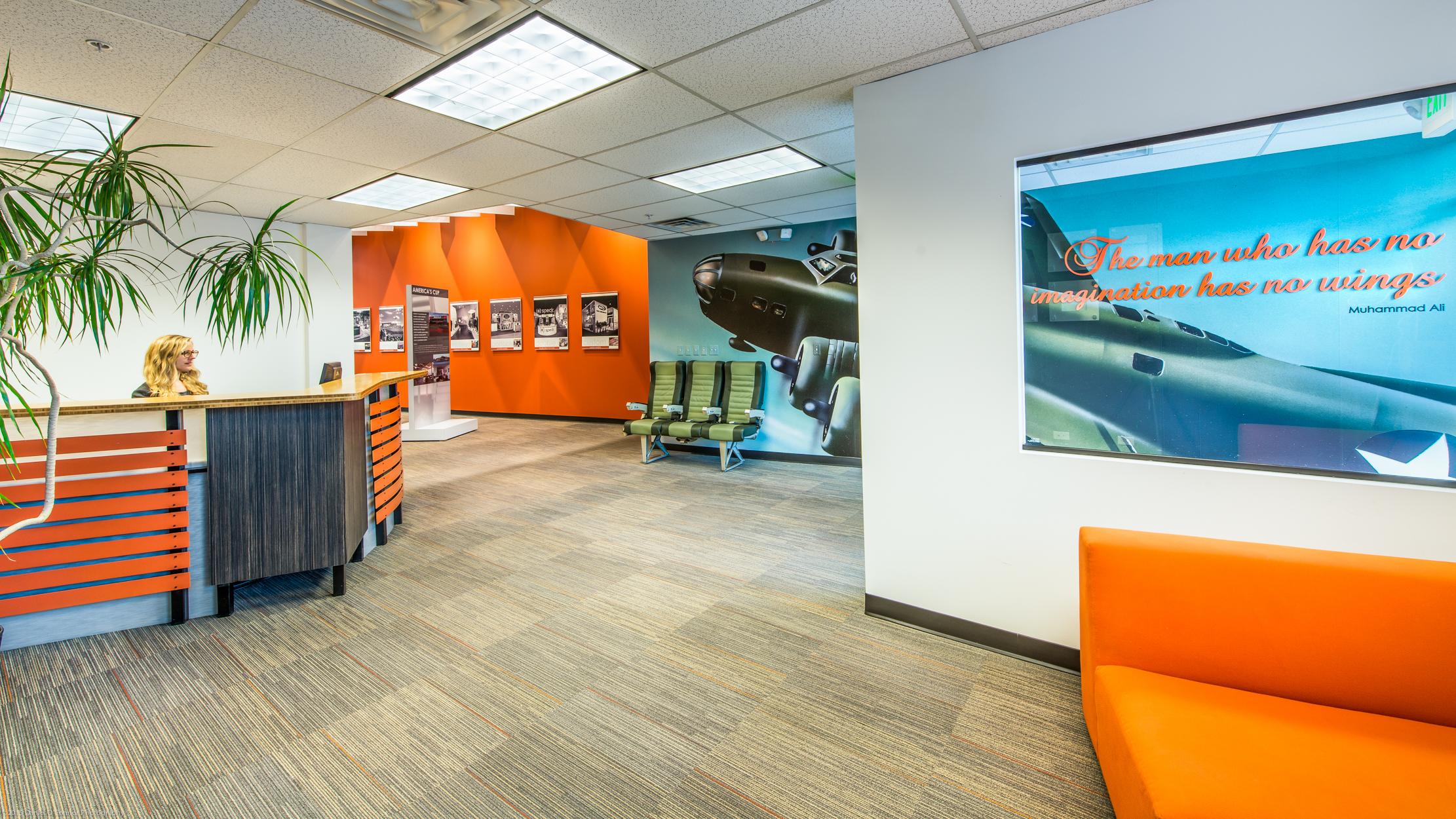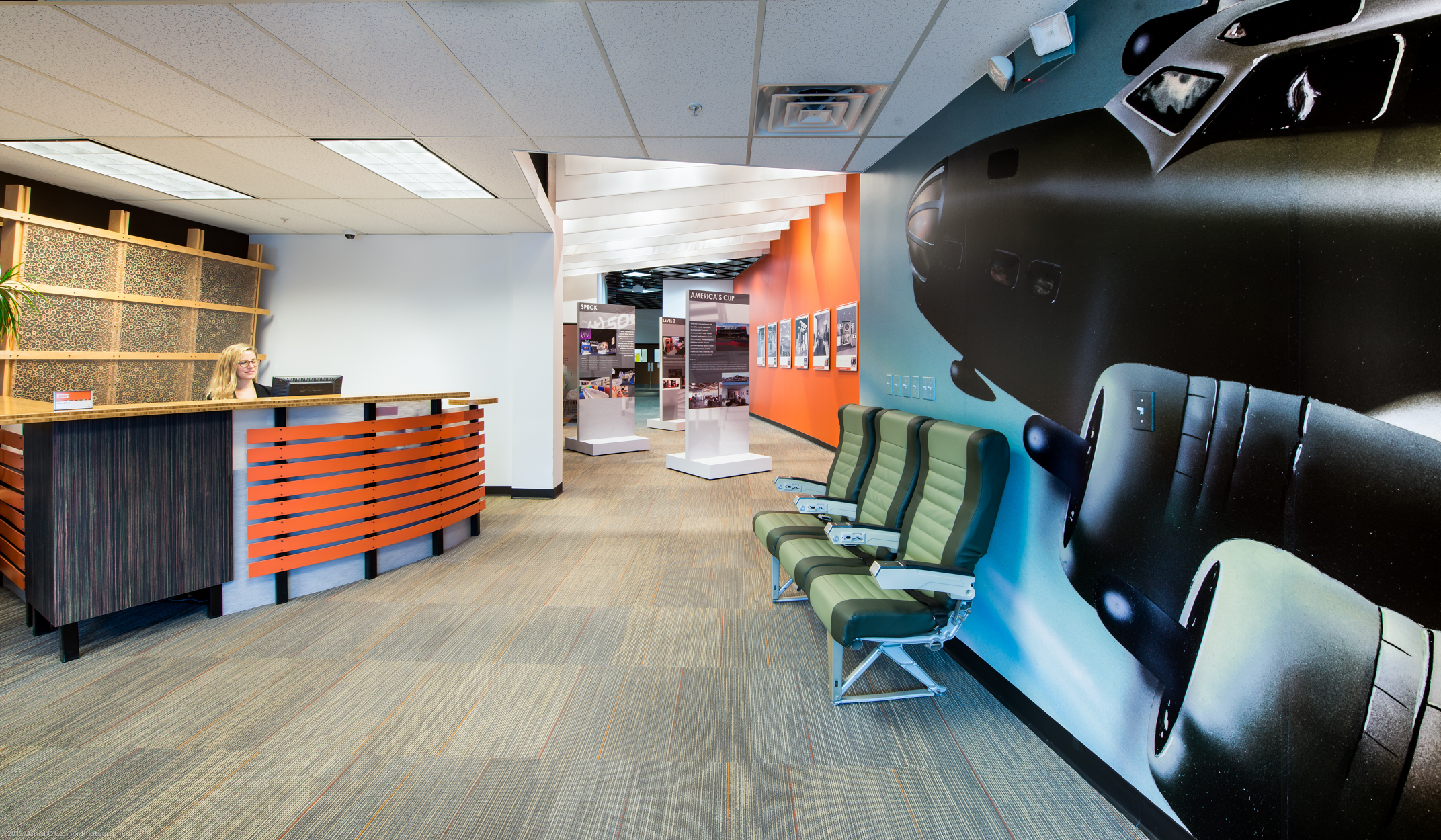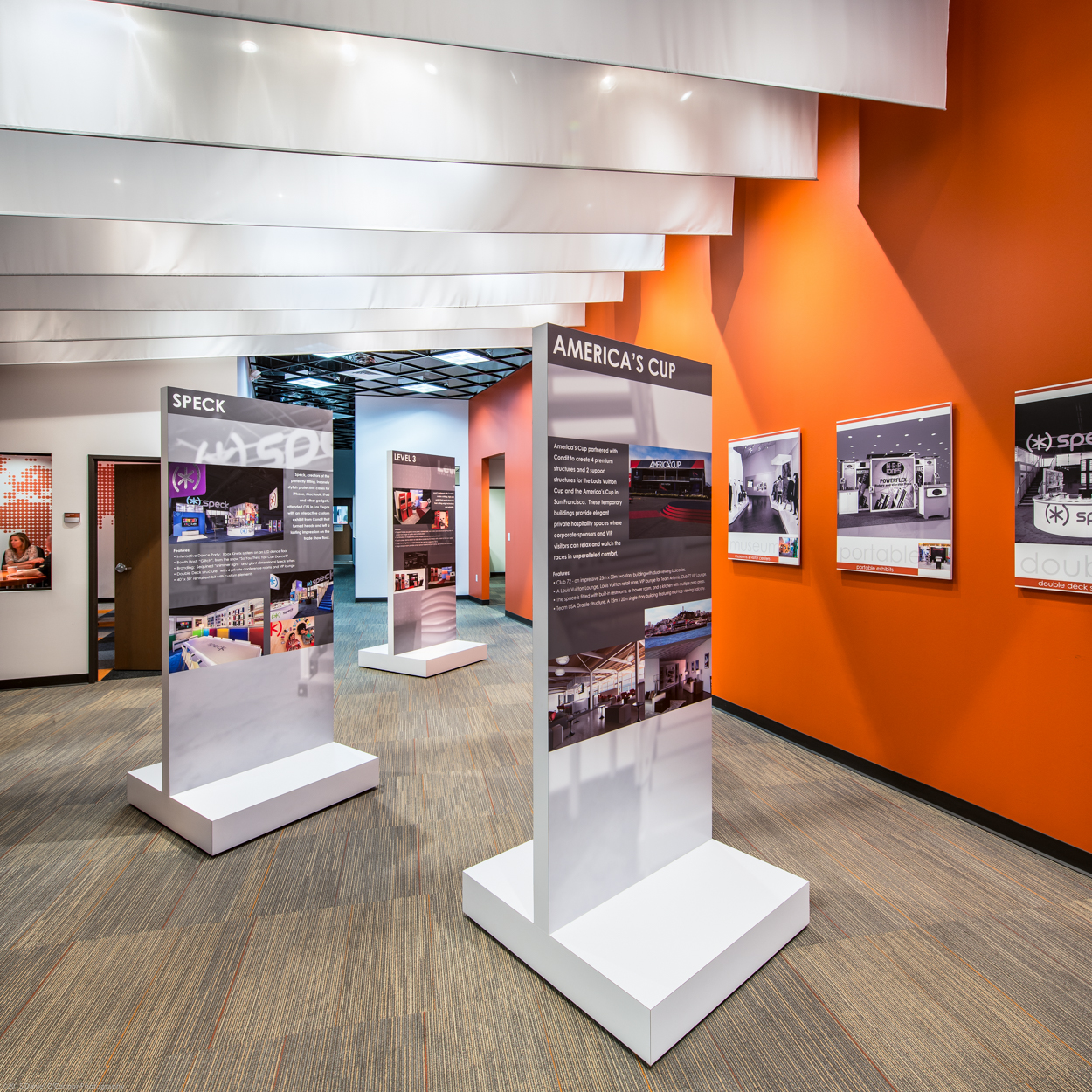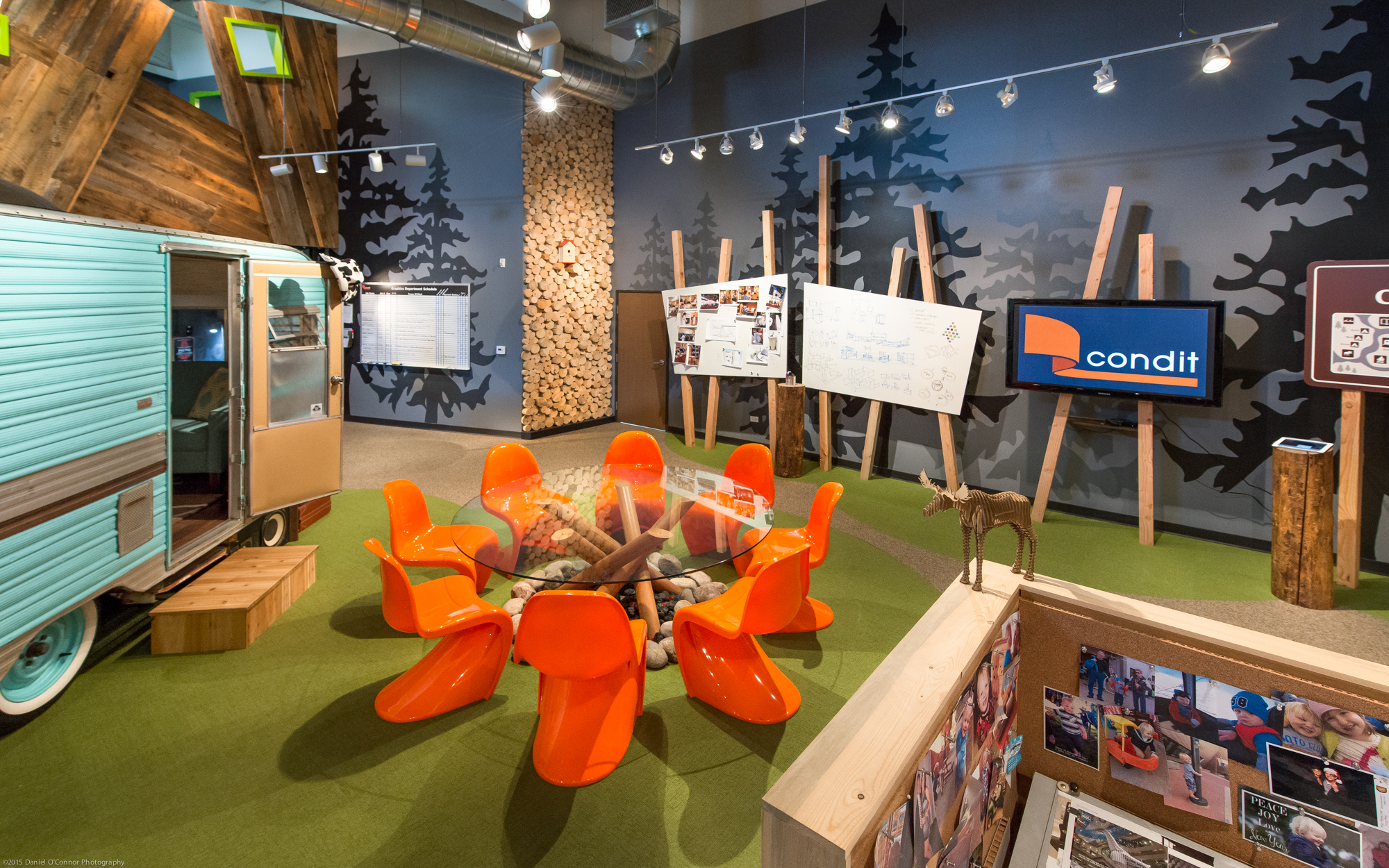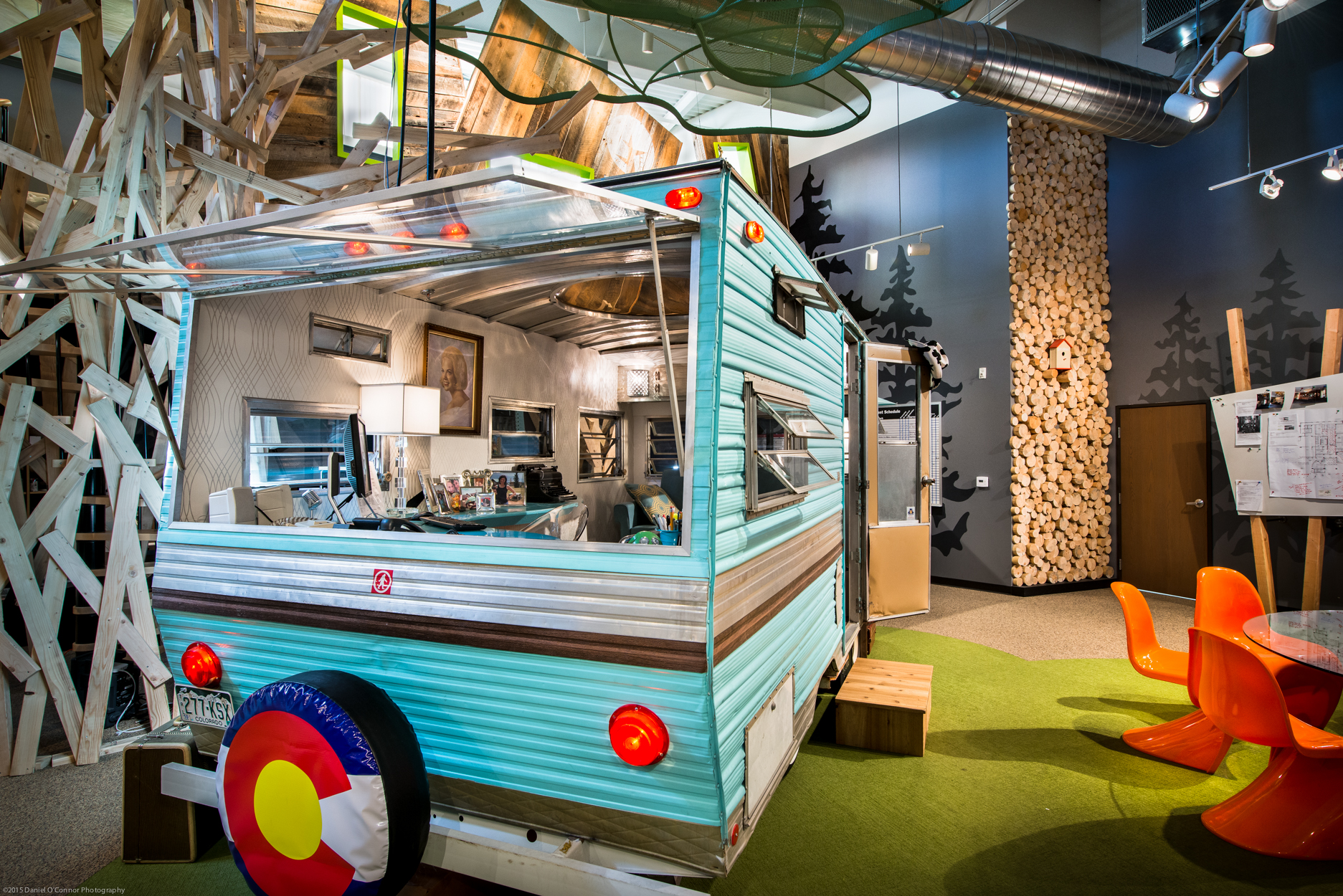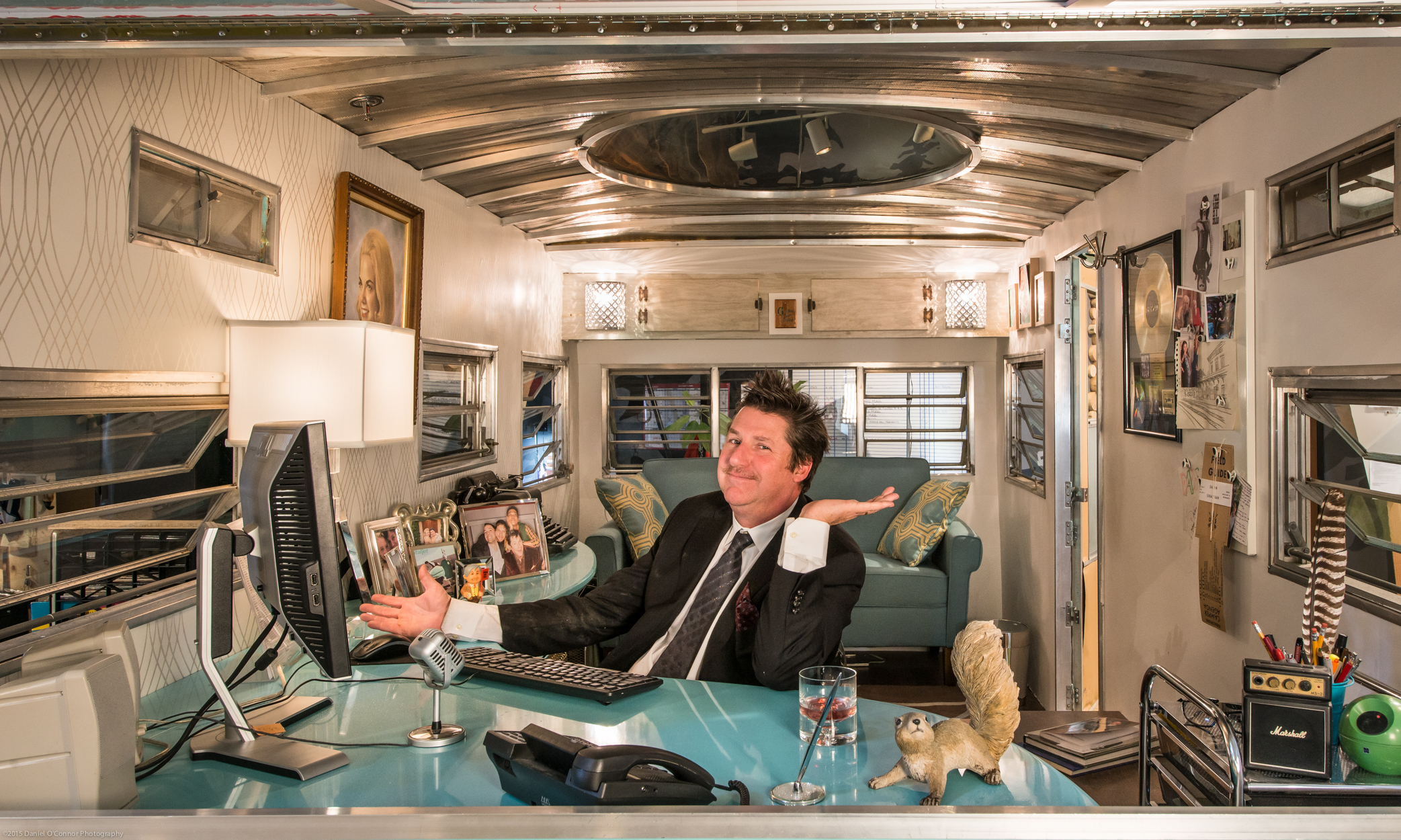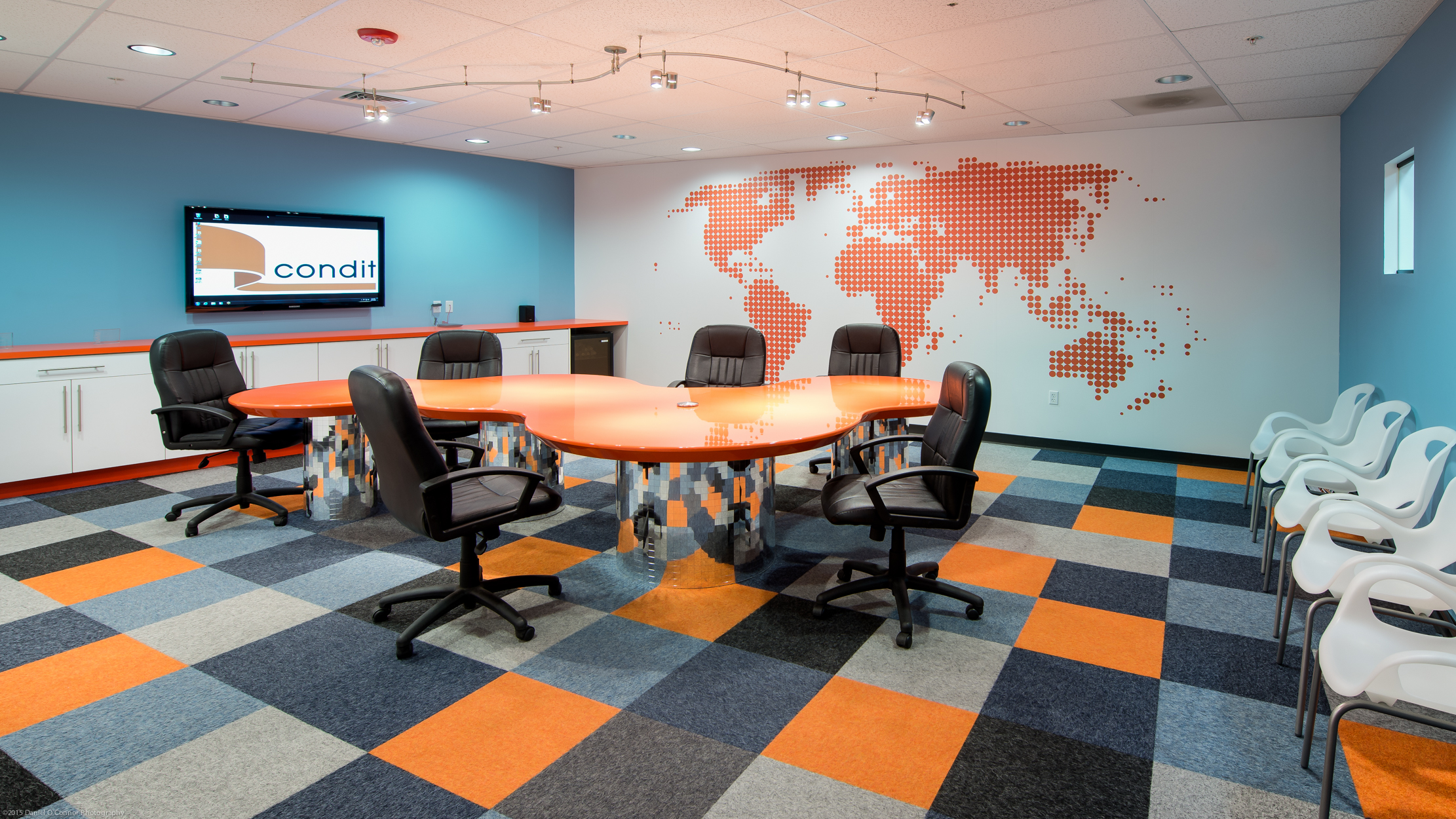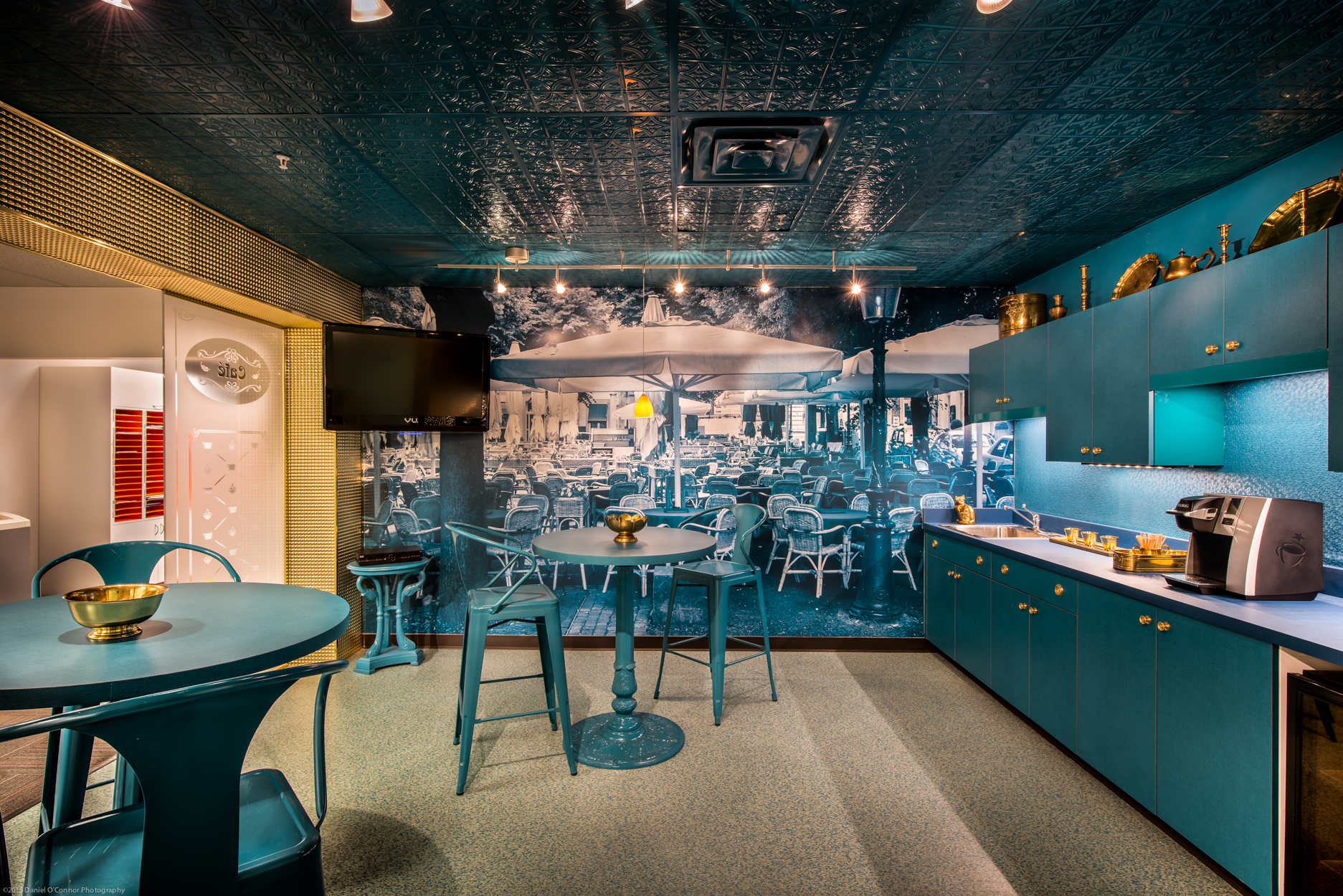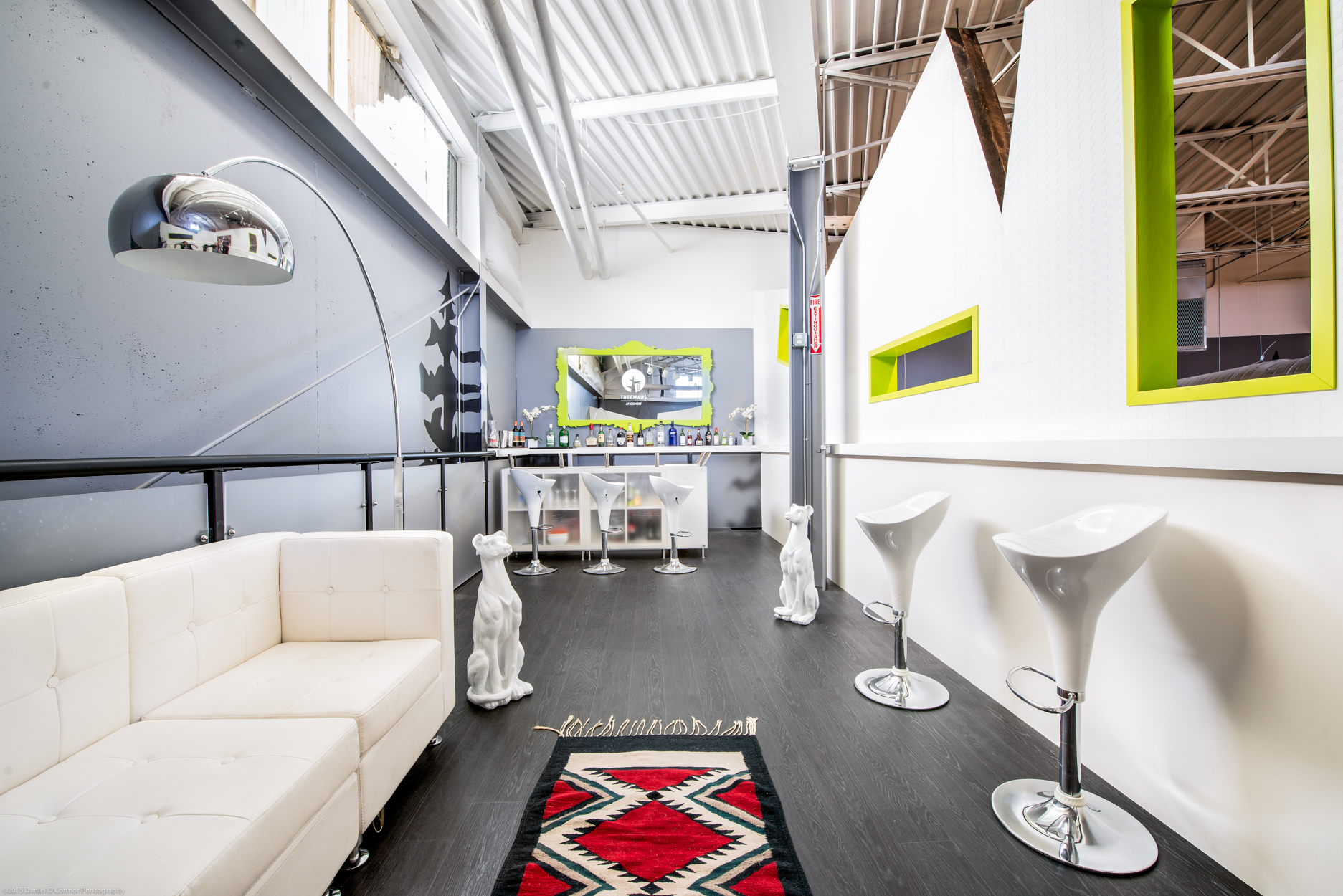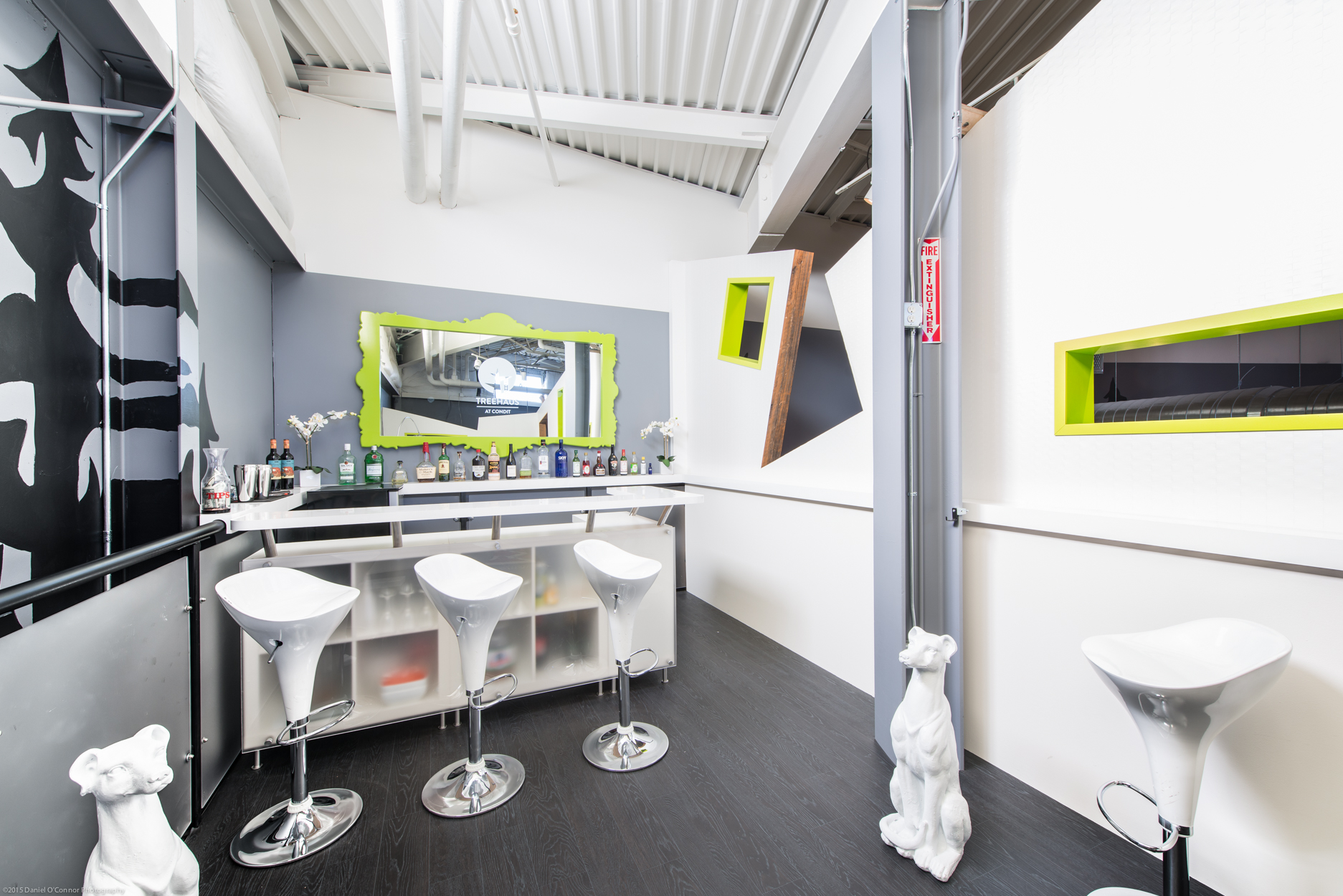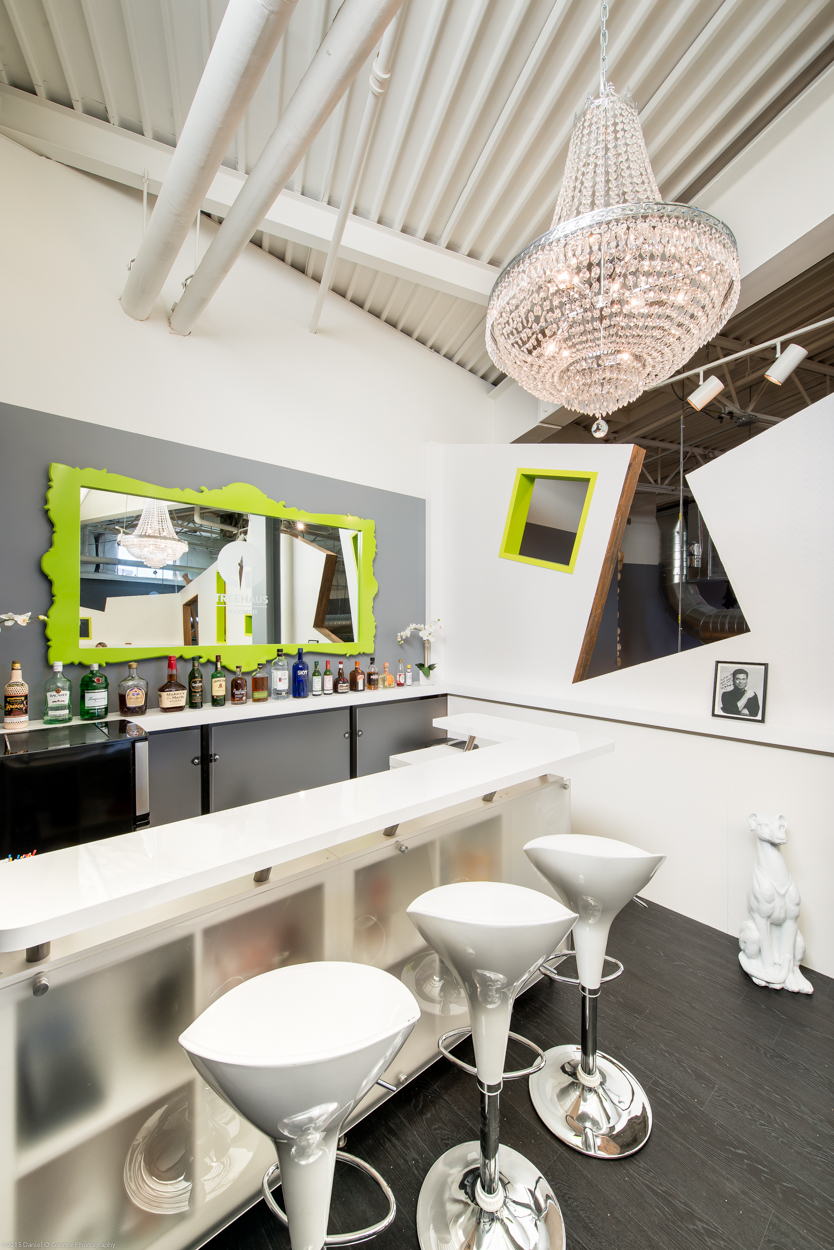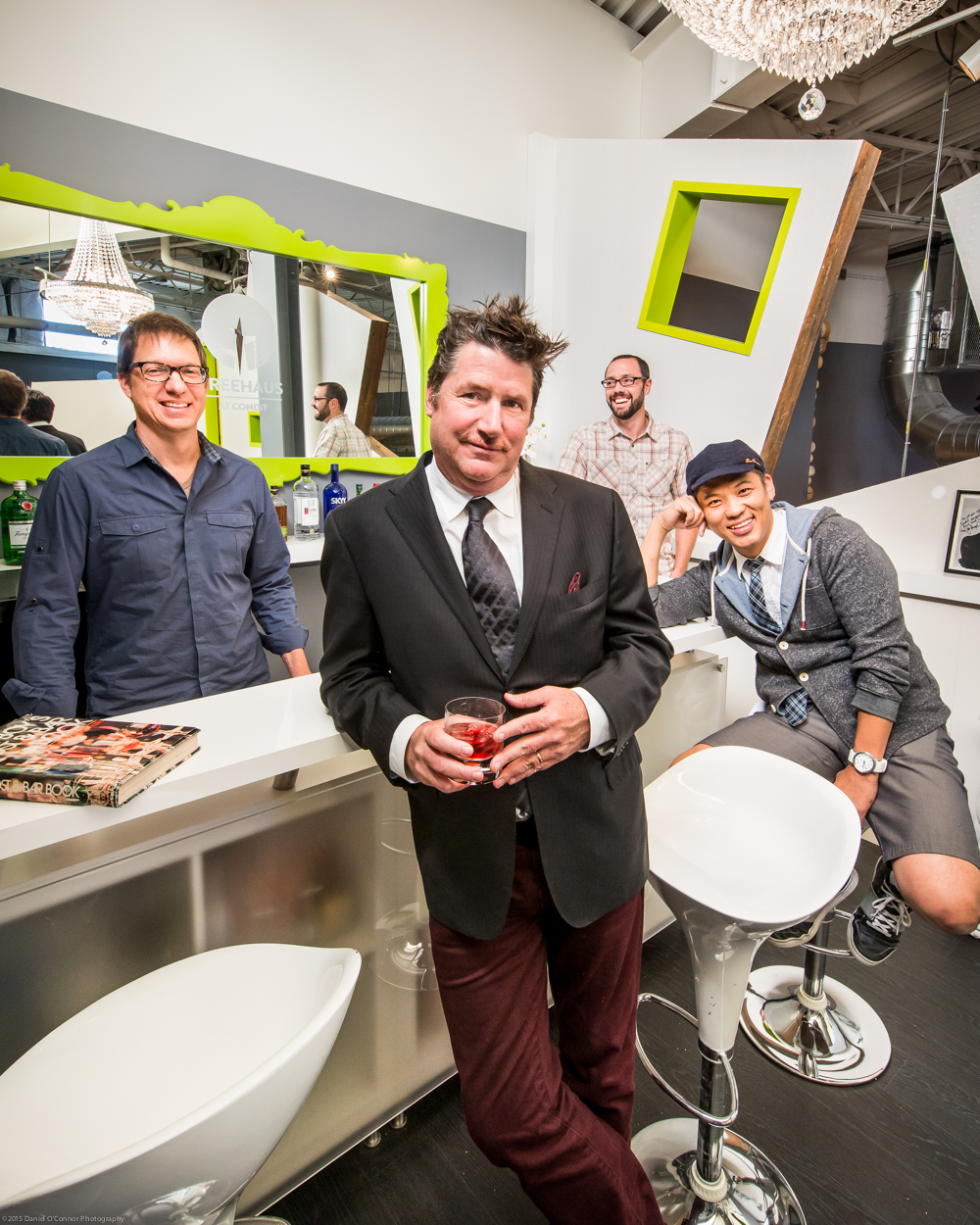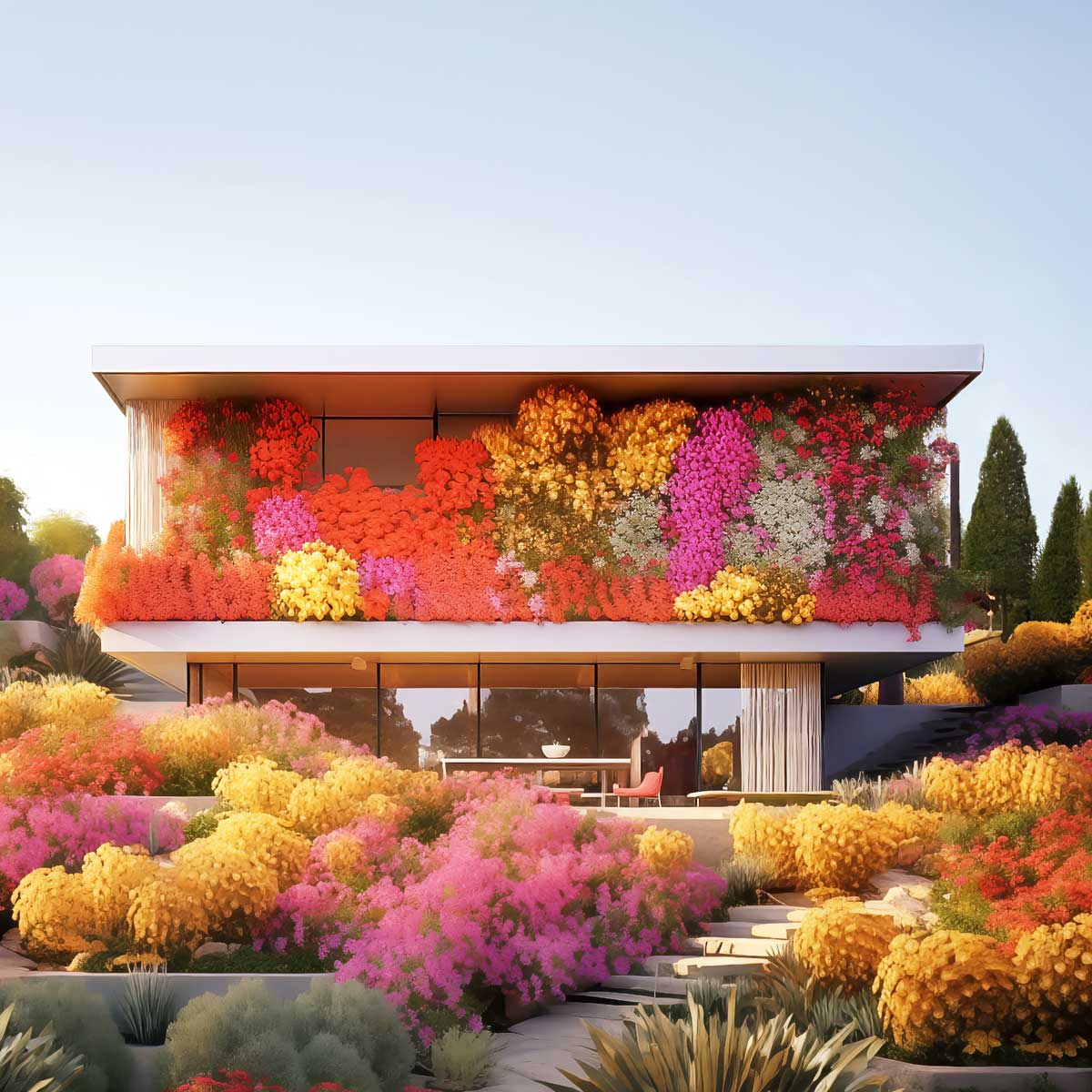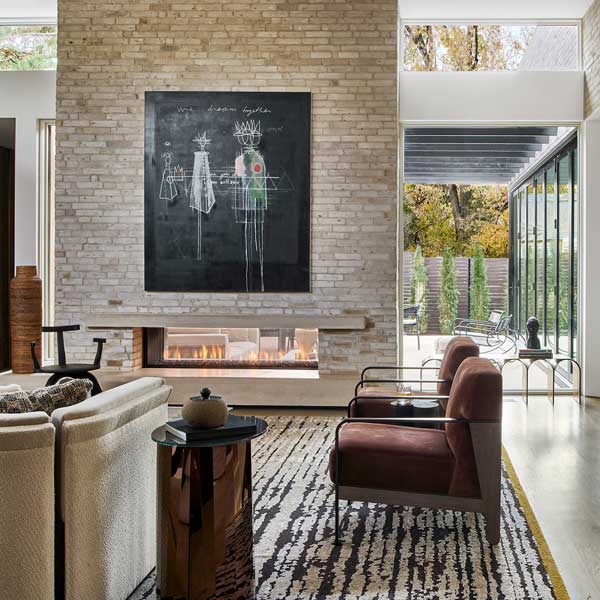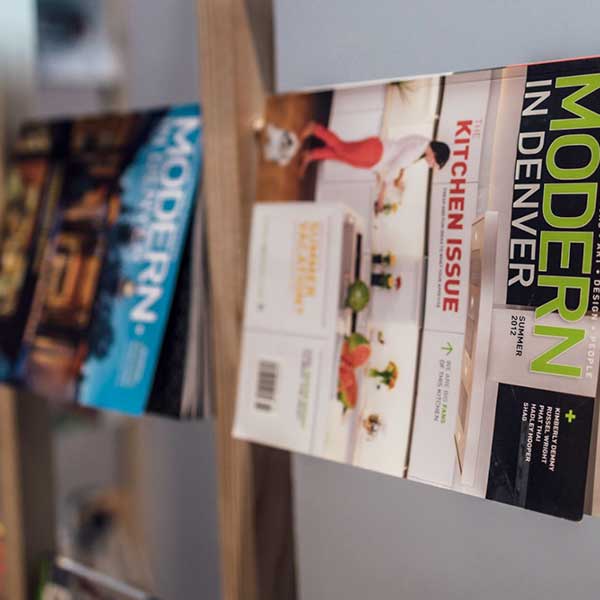A startling splash of design bathed in blazing orange, Denver exhibit house Condit brings brands to life in stunning style.
WORDS: CLINTON WAIZ IMAGES: D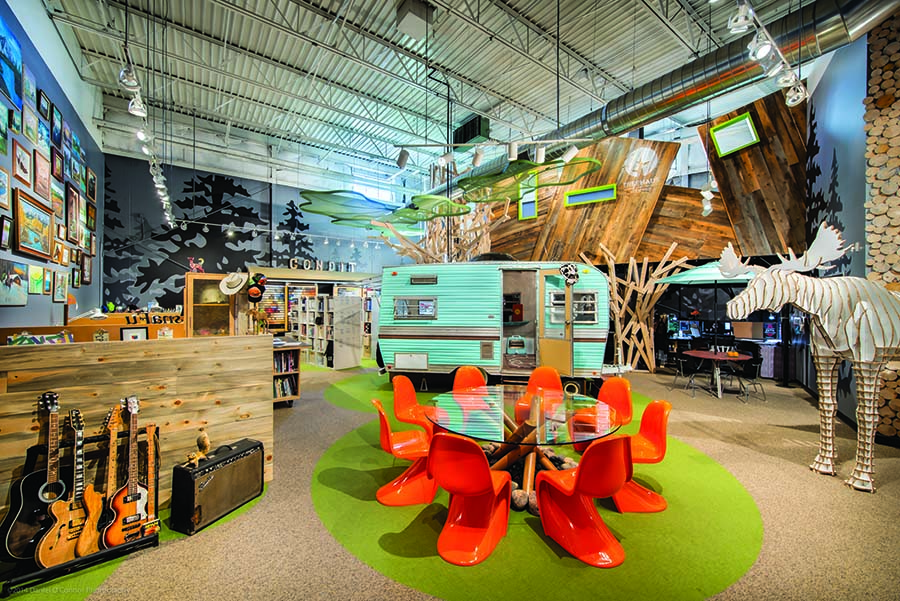 ANIEL O’CONNOR
ANIEL O’CONNOR
Tucked away amid a bleak flatland of industrial buildings and cornered in by the confluence of I-25 and I-70 lies a startling splash of design brilliance bathed in blazing orange. This is Condit. Founded in 1945 by Bill Condit as Denver’s first graphic arts studio, during the 1960s, Condit Exhibits began the transformation from traditional advertising agency to a full-fledged exhibit design and manufacturing company. Today, Condit occupies a niche space in the global trade show and event exhibit market. Having outgrown their former home of more than three decades—which comprised of two spaces about two miles apart—in 2011, Condit began looking for a new design, manufacturing, and storage space. “It wasn’t logistically efficient, and more importantly, the spaces we occupied weren’t a strong reflection of our creative capacity,” said Richard Raedeke, Condit’s Vice President of Operations. Today, Condit’s creative capacity is on full display in the kind of vivid detail more typical of a semi-lucid dreamscape than an industrial office park populated by 18 wheelers covered in grime.
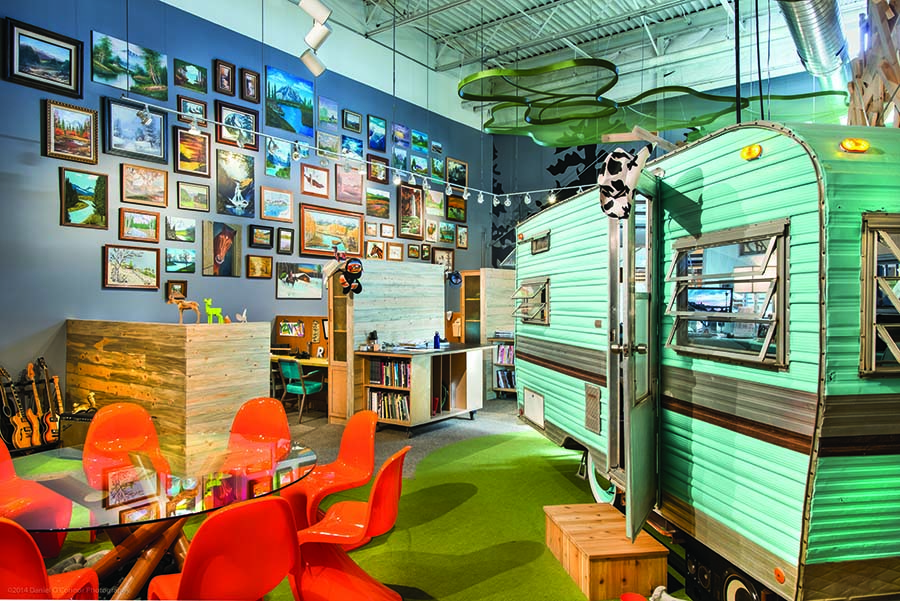
From the moment you walk in the door to the moment when clients sign their first contracts, Condit is more of an experience than simply a place to do business. On arrival, visitors are greeted by the vibrant reception area, which blends midcentury nostalgia with bold colors, all while chronicling Condit’s roots as an advertising pioneer. A bank of airplane seats neatly covered in leather sit below a seemingly to-scale painting of a B-17 bomber, replicated from an illustration that once hung above Bill Condit’s design space. While the homage to the past is stoutly present, just steps beyond the reception, it is clear that the future of large-scale exhibit design and production is Condit’s focus.
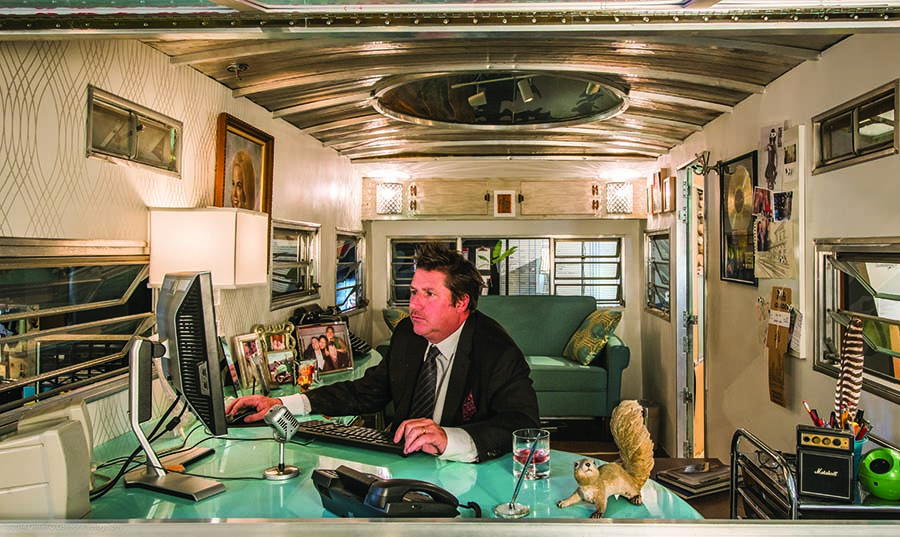
The centerpiece of the new space and the cornerstone of what Condit offers clients are embodied in the creative studio design. Walking into the “Creative Campground” is like stepping into an imaginary wonderland that manages to somehow stay on just the right side of campsite kitsch. A wild blend of true retro-mod and dazzling design dexterity, the notion for the space was born from Design Director Kevin Trainor’s desire to convert a small pull-along camper into an office. By allowing the trailer, painted in Tiffany teal, to take center stage in the campsite, the rest of the space seems to be a polished backdrop for The Yogi Bear Show. “The idea behind the Creative Campground, and really the entire building, was to create a one-of-a-kind marketing environment that represents Condit’s ability to visualize a client’s brand in a three-dimensional exhibit space,” said Trainor. “Condit is about bringing brands to life and making the experience of seeing the brand on display a full five-sense encounter.”
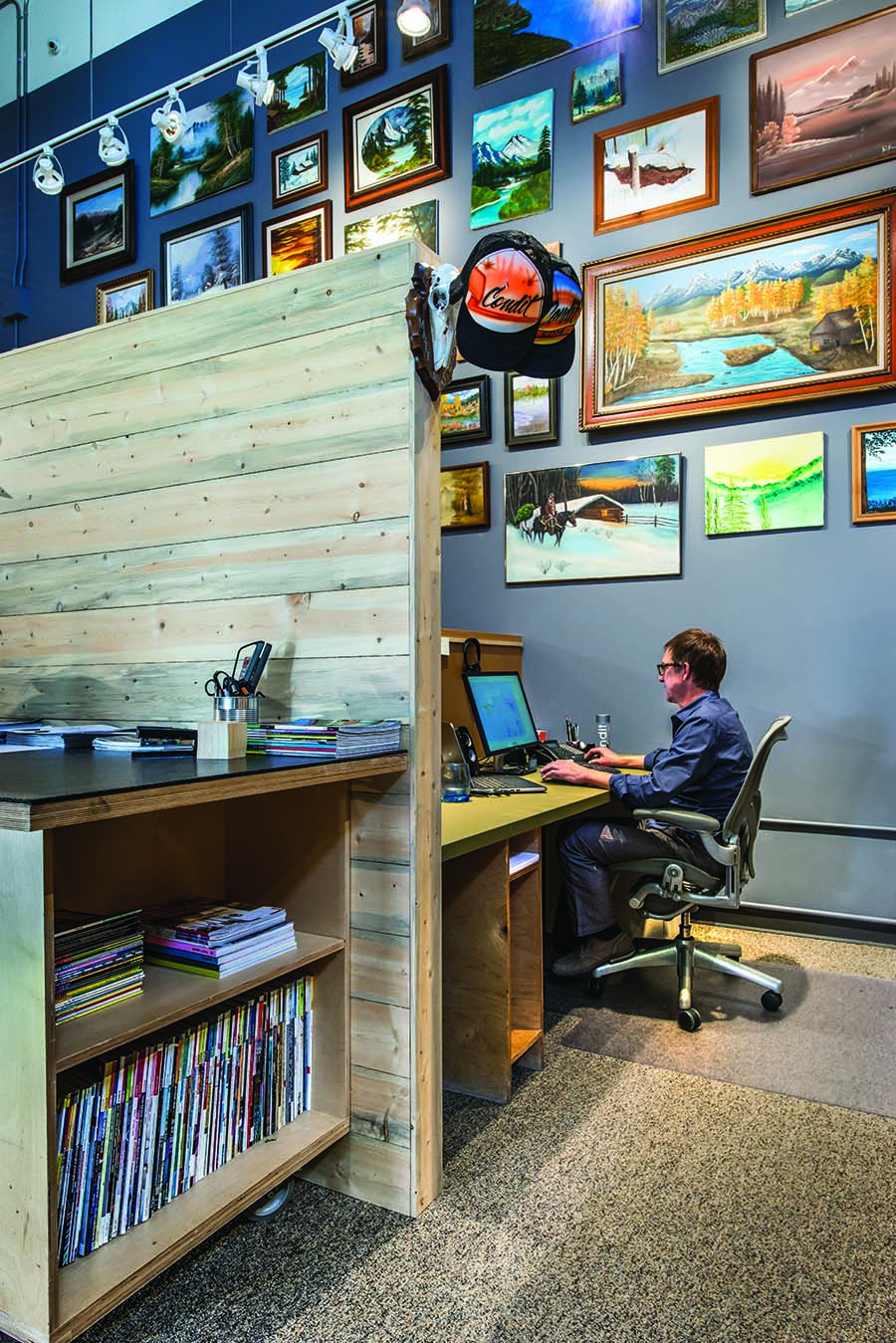
Housing Trainor’s team of graphic and 3D designers, the campsite is more than just whimsy, it’s actually a carefully constructed embodiment of the near limitless possibilities in exhibit design. Every material incorporated is an actual product that Condit has or can incorporate into an exhibit. From the super-lite, beetle-kill pine used to finish workspace exteriors to the incredibly strong, yet portable, structural stanchions supporting the second-floor treehouse lounge, the Creative Campground dons an “if you can dream it, we can do it” mindset. The campsite theme also has strong resonance with Condit’s eco-conscious clientele, which includes health food and outdoor sporting companies among a diverse array of others.
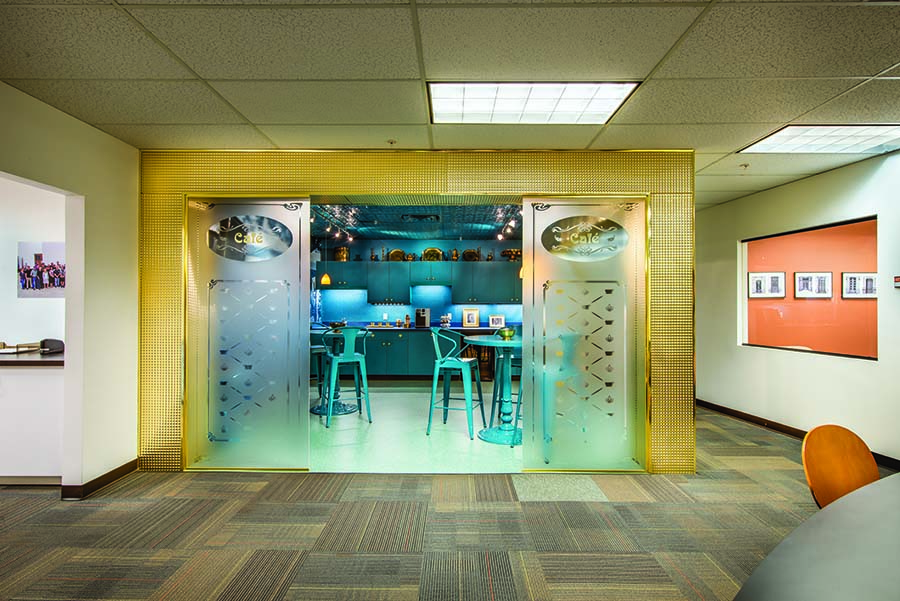
When the tour continues, visitors pass through the operations area, which still stylish, reads as buttoned up, taking care of business compared to the campsite. Here, project managers, sales teams, marketing, and administrative personnel are on track but not without their own access to fantasy. Their moment happens in the company break room, where the escape is more like time travel than the great outdoors. The kitchen is 1920s Café Parisian. Cloaked in blue and dappled in gold ornamentation, the kitchen recalls a side-street sweet spot just off the Champs-Élysées where long afternoons merge café au lait and people watching.
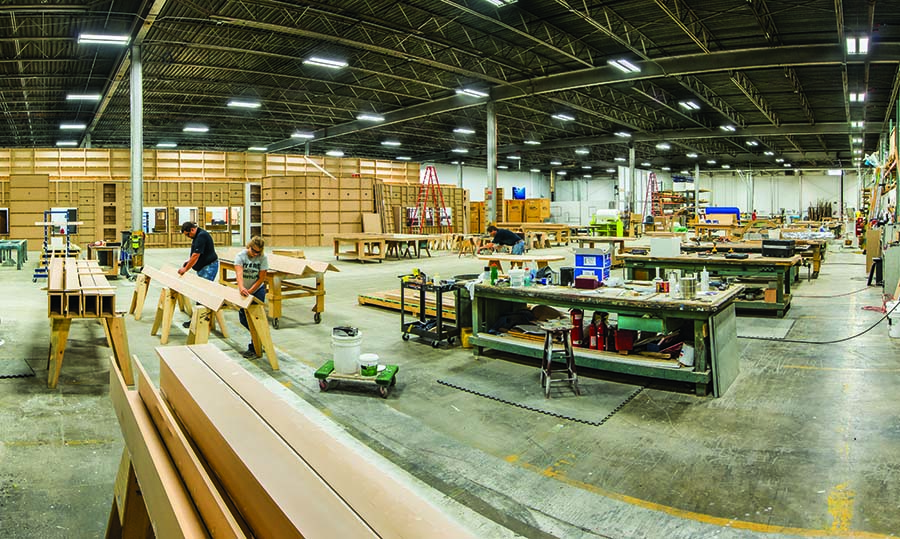
Beyond the kitchen lies the shop—the heart and soul where the rubber meets the road. What good is imagination without the hands-on know-how to make the magic happen? The expansive fabrication space includes adjoining metal- and wood-working shops, a fully ventilated paint booth, print shop, and, of course, cavernous storage space. Here, the process is precise and controlled, safety glasses are required, and wandering is discouraged. Saws and screw guns buzz and hum, fork lifts move large pieces, and entire exhibits can be assembled, fine-tuned, deconstructed, and packaged for shipping by Condit’s crew of roughly 25 skilled craftsmen.
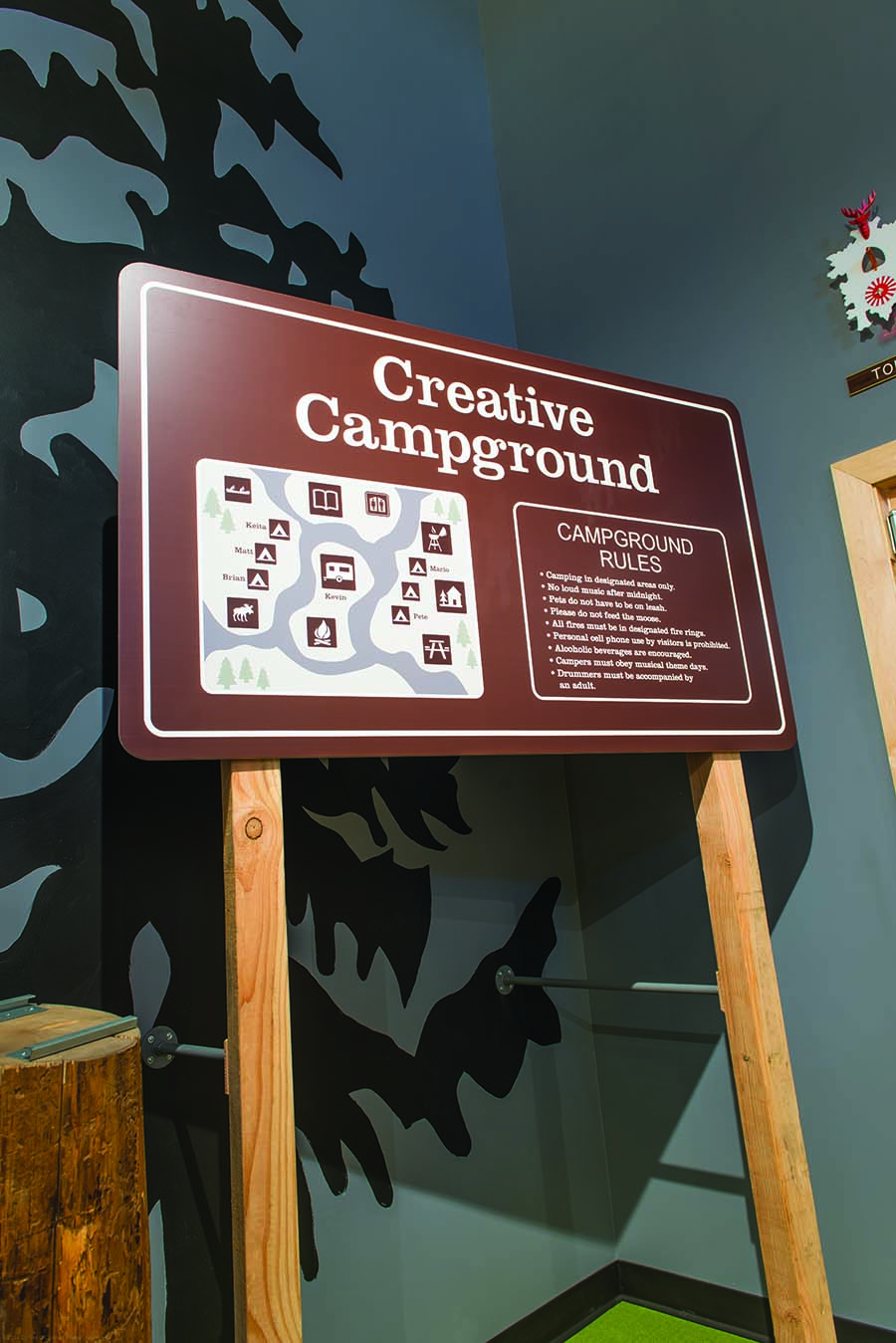
What’s next for Condit? Only whatever the future can imagine. With clients like the Denver Art Museum hiring them to fabricate the displays for the Cartier exhibit while supporting the exhibit needs of some 700 clients worldwide, the possibilities seem limitless.
Check out more images of Condit from Daniel O’Connor Photography.


